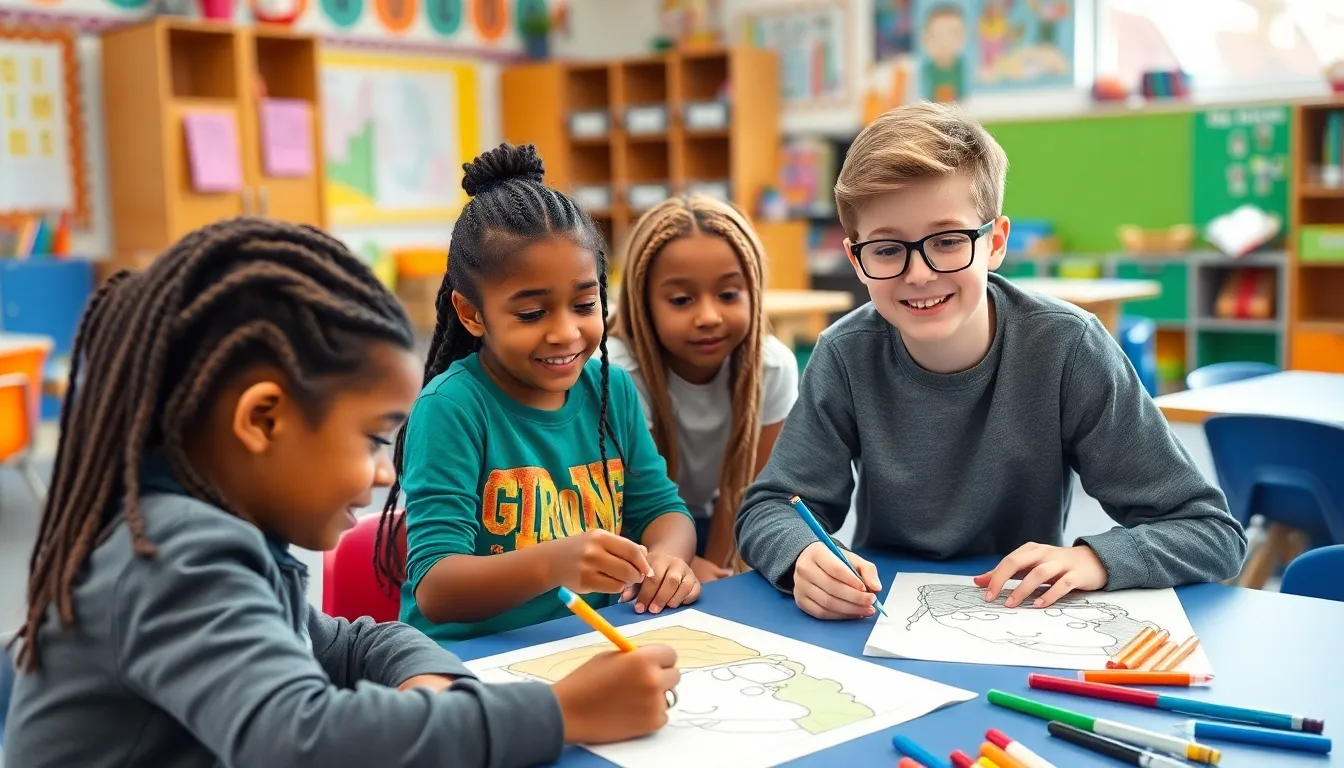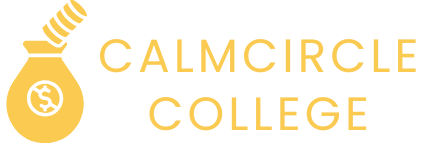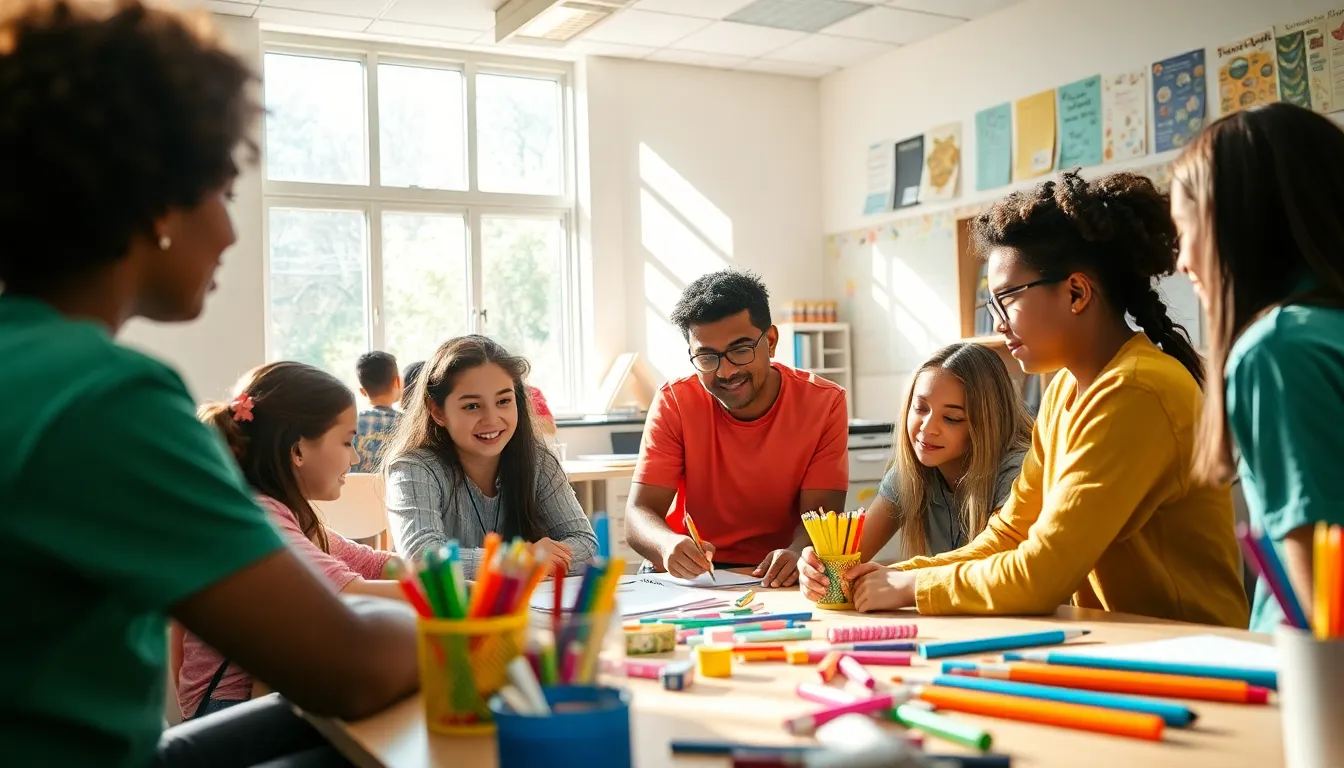In a world where traditional classrooms can feel like a never-ending cycle of tests and textbooks, alternative education programs are shaking things up. They’re not just a quirky trend; they’re a lifeline for students craving a different approach. Imagine a place where learning isn’t confined to four walls, and creativity isn’t just encouraged—it’s celebrated!
Table of Contents
ToggleOverview of Alternative Education Programs
Alternative education programs encompass a variety of educational approaches that deviate from traditional schooling methods. They offer innovative learning experiences tailored to individual student needs. Flexibility characterizes these programs, allowing students to explore interests beyond standard curricula.
Many alternative programs focus on experiential learning. This hands-on approach encourages students to engage with real-world problems, fostering critical thinking and creativity. Non-traditional assessments, such as portfolio reviews, provide comprehensive evaluations of student progress.
Project-based learning remains a fundamental component of alternative education. Students collaborate on projects that reflect their interests, enhancing motivation and ownership of their learning. Such collaboration often leads to improved social skills and teamwork.
Programs like Montessori and Waldorf emphasize holistic education. These methods prioritize emotional and social development alongside academic growth. Students in these environments thrive in creative and nurturing settings, where they explore their interests deeply.
Self-directed learning also plays a significant role. This approach empowers students to take control of their educational journeys. Learners explore topics at their own pace, fostering a sense of autonomy and responsibility.
Online and hybrid programs have gained momentum. They provide flexibility in learning, accommodating diverse student schedules. Access to a broader range of resources and instructional methods enhances the educational experience.
Alternative education programs cater to various learning styles. Students who may struggle in traditional settings find support and encouragement within these programs. Diverse options help ensure that education remains accessible to all learners, regardless of their backgrounds.
Benefits of Alternative Education Programs

Alternative education programs offer unique advantages that enhance the learning experience for many students. They prioritize engagement and creativity, deviating from traditional instructional methods.
Personalized Learning Approaches
Personalized learning approaches cater to individual needs, allowing students to progress at their own pace. Tailoring education fosters deeper comprehension and retention of information. Students receive targeted support that addresses their distinct strengths and weaknesses, promoting mastery over subjects. Programs often incorporate varied teaching methods, accommodating diverse learning styles. Flexibility in lesson plans and assessments encourages exploration of interests. This student-centered approach results in increased motivation and enthusiasm for learning, significantly impacting overall academic performance.
Flexibility and Accessibility
Flexibility and accessibility characterize alternative education programs, making them appealing choices for many families. Students benefit from adaptable schedules that fit their lifestyles, enabling participation in extracurricular activities or part-time jobs. Hybrid and online formats expand educational opportunities, reaching learners in remote or underserved areas. Diverse program offerings ensure that all students, including those with special needs, find suitable options. Customizing curriculum and instruction leads to relevant experiences that resonate with student interests, ultimately enhancing their learning journey.
Types of Alternative Education Programs
Alternative education programs offer diverse methods to meet students’ unique needs. This section details various types of these programs.
Montessori Schools
Montessori schools emphasize self-directed learning, allowing students to choose activities that interest them. Students engage with hands-on materials, promoting active exploration and problem-solving skills. These schools foster independence and collaboration, creating an engaging environment for children. Teachers guide rather than direct, allowing learners to progress at their own pace. Research shows that Montessori students often demonstrate strong critical thinking and social skills.
Charter Schools
Charter schools operate independently but must adhere to state standards. These institutions can develop specialized curricula that cater to specific community needs. Students often participate in project-based learning, enhancing their engagement and motivation. Many charter schools emphasize arts, technology, or STEM education, providing unique opportunities for deeper exploration. By offering innovative teaching methods, these schools attract families seeking alternatives to traditional education.
Homeschooling
Homeschooling allows families to educate children at home, tailoring lessons to individual learning styles. Parents serve as primary educators, creating a personalized learning environment. Flexibility in scheduling enables students to learn at their own pace, balancing academics with interests. Resources from online platforms or local co-ops support homeschooling families, increasing access to quality education. Evidence indicates that homeschooled students often excel academically and socially.
Challenges Facing Alternative Education Programs
Alternative education programs face several challenges that can impact their effectiveness and growth.
Funding and Resources
Funding remains a crucial issue for many alternative education programs. Limited financial support often hinders program expansion and resource acquisition. Many rely on grants and donations, which can be unpredictable and insufficient. Schools operating under charter arrangements may struggle to compete for funds in traditional education landscapes. Resource allocation becomes challenging when schools lack the infrastructure or staff needed to implement innovative curricula effectively. Additionally, obtaining materials that support project-based learning can lead to further complications. Collaborations with local businesses can provide some relief, yet these partnerships might not be sustainable long-term.
Public Perception and Misunderstandings
Public perception poses another significant challenge. Many individuals view alternative education programs with skepticism, associating them with academic failures. Misunderstandings about the effectiveness and structure of these programs can deter families from enrolling their children. Some believe alternative education lacks rigor, mistakenly assuming it prioritizes play over fundamental academics. Media portrayal often perpetuates these views, emphasizing sensational aspects rather than factual benefits. Correcting these misconceptions requires persistent advocacy and open communication regarding the successes and unique methods found in alternative education settings. Engaging community stakeholders plays a vital role in fostering a more positive image.
Alternative education programs represent a transformative shift in how students engage with learning. By prioritizing creativity and personalization, these programs cater to diverse needs and learning styles. They empower students to explore their interests in a supportive environment, enhancing both academic and social development.
The flexibility of these programs allows for a more balanced approach to education, making it accessible to a wider range of learners. As awareness grows about the advantages of alternative education, it’s essential for communities to support and advocate for these innovative approaches. Embracing alternative education can lead to a more enriched and effective learning experience for all students.




